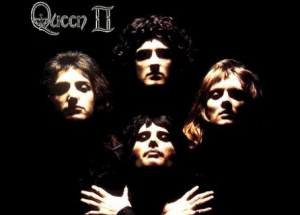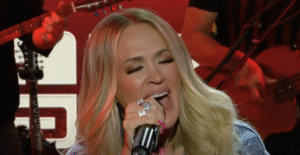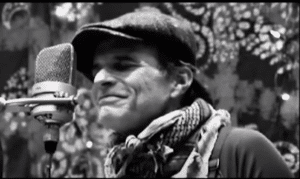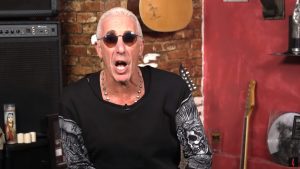10 Songs John Lennon Probably Regretted Recording
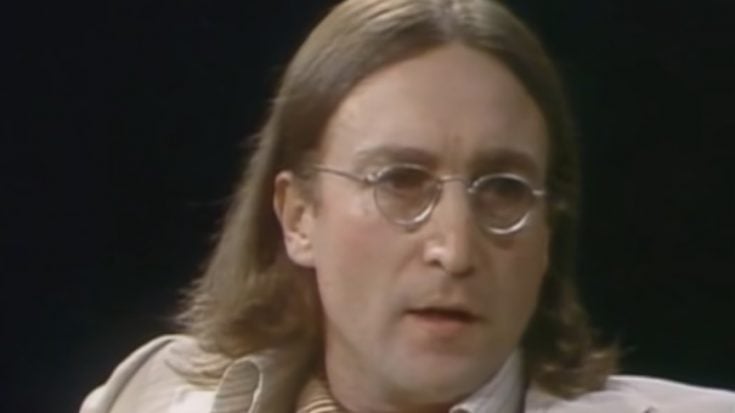
John Lennon - TheMMProducties / Youtube
The earth shook in 1970 when The Beatles, the band that soundtracked a generation, declared their farewell. Though the solo careers of the Fab Four titans continued to cast long shadows, a collective sigh of mourning echoed across the globe. John Lennon, ever the outspoken artist, embarked on a prolific solo journey.
Lennon poured his soul onto vinyl, dissecting his inner turmoil on albums like Plastic Ono Band and raging against injustice on Some Time in New York City. A true voice of his time, he wasn’t afraid to experiment. However, some experiments landed a little flat.
Compared to the meticulousness of The Beatles, Lennon’s solo work sometimes went off on rambling tangents, leaving listeners wondering where exactly the song was headed.
Despite these occasional missteps, Lennon’s songwriting prowess remained undeniable. He continued to craft powerful music that reflected the world around him. But even the best artists have a clunker or two. Let’s take a look at 10 songs from John Lennon’s solo career that might be best left forgotten.
10. “Forgive Me My Little Flower Princess” (1984)
Lennon’s solo career wasn’t afraid to delve into his regrets, particularly when it came to past relationships with women. “Forgive Me My Little Flower Princess” falls into this category.
While Lennon’s remorse is evident, the song’s saccharine tone, particularly in comparison to the more mature love songs found on “Double Fantasy” and “Milk and Honey,” feels forced. Imagine Lennon as an overly enthusiastic puppy begging for forgiveness, and you get the picture.
Though the song was never officially released, existing as a demo at the time of Lennon’s death, it lacks the polish that might have saved it. While a final version could have been a heartfelt apology, the demo’s cloying nature leaves listeners yearning for a more nuanced expression of Lennon’s newfound devotion.
9. “Old Dirt Road” (1974)
The 1974 album Walls and Bridges reflected a period of emotional turmoil, particularly following Lennon’s separation from Yoko Ono. Tracks like “Going Down on Love” echoed the desperation of “Help!”. This vulnerability spilled over into “Old Dirt Road”, a collaboration with Harry Nilsson.
While the song boasts some decent qualities, with a soft rock feel reminiscent of Nilsson’s style, Lennon seems ill-fitting. The “wistful wanderer” aesthetic feels forced, and the yacht rock pastiche isn’t quite convincing.
The jarring placement between the celebratory “Whatever Gets You Thru The Night” and Lennon’s personal struggles only amplifies the song’s shortcomings. It attempts the emotional rawness of “Plastic Ono Band” but falls short, lacking the depth and intensity that defined that earlier work.
8. “I Don’t Want to Be a Soldier Mama” (1971)
Lennon was a prolific protest singer, tackling social issues from “Revolution” with The Beatles to the politically charged “Some Time in New York City”. “I Don’t Want to Be a Soldier Mama” on Imagine certainly fits his anti-war message. However, the song’s execution falls flat.
Clocking in at a bloated six minutes, the track stretches its single, powerful message thin. Lennon leans heavily on bluesy instrumentation and a repetitive lyric (“I don’t want to be a soldier mama”) rather than offering deeper commentary.
While the backing band, particularly Klaus Voorman’s disorienting bassline, captures the chaos of war, Lennon seems to be phoning it in lyrically. Especially considering the powerful “Gimme Some Truth” following it on the album, “Soldier Mama” feels toothless and repetitive in comparison.
7. “One Day at a Time” (1973)
By 1973, John Lennon was re-evaluating his career. Questioning the effectiveness of his overtly political songs, he aimed for a “back-to-basics” sound with Mind Games. However, the album wasn’t entirely smooth sailing.
“One Day at a Time”, written during his separation from Yoko Ono, finds Lennon urging himself to stay positive. The message of taking things one day at a time is overshadowed by the song’s conflicting tones. The gentle acoustic guitar intro clashes with Lennon’s grating falsetto, which attempts to evoke a dreamlike state but comes across as smug instead.
The song’s overall incoherence feels like a deliberate self-censorship, muddying any potential message of profound self-reflection. This lack of focus is particularly glaring given the raw honesty Lennon typically brought to his music.
6. “Do You Want to Dance” (1975)
Lennon’s infamous “lost weekend” in LA, following his separation from Yoko, was a time of heavy partying and musical exploration. While revisiting classic rock and roll sounds held some appeal, “Do You Want to Dance” marked a turning point.
Lennon’s voice undeniably shone on covers of his rock and roll idols, but his reggae-infused take on the ballad “Do You Want to Dance” felt like a bizarre departure. The original song was a smooth 50s ballad perfect for swaying at a school dance. Lennon’s reggae reinterpretation, however, came across as mocking rather than respectful.
This strange choice hinted at the emotional toll of his separation, a hidden sadness lurking beneath the upbeat reggae guitars. While seemingly harmless, “Do You Want to Dance” showed the first cracks in Lennon’s Los Angeles revelry, revealing a deeper longing for reconciliation.
5. “I’m Losing You” (1980)
Following a wild period in California, Lennon returned to Yoko, their relationship seemingly stronger. The birth of their son Sean solidified this newfound peace, and Lennon even took a music hiatus. However, a trip to Bermuda reignited his creative spark, leading to the collaborative album Double Fantasy. While the album celebrated their love and Lennon’s embrace of fatherhood, one track stands out for its discord.
“I’m Losing You” takes a turn for the worse when considering its backstory. Lennon, with a history of infidelity, pleads for Ono’s return. This self-pitying plea rings hollow, especially in contrast to Ono’s response, “I’m Moving On”.
Instead of wallowing in Lennon’s regret, Ono holds him accountable, calling out his childish behavior and demanding he work on himself before seeking reconciliation. This power dynamic shift highlights Ono’s artistic growth as she experiments with genres like disco, leaving Lennon’s remorse overshadowed by Ono’s strength.
4. “John Sinclair” (1972)
Lennon’s foray into a full-fledged political album, Some Time In New York City, was an intriguing prospect. Tracks like “Power to the People” showcased his ability to craft powerful protest songs. However, “John Sinclair”, a song advocating for the release of a marijuana activist, highlighted the pitfalls of unchecked creative control.
The song, nestled amongst Ono’s tracks, suffers from a cluttered production. Lennon’s repetitive chanting of “you gotta” creates an irritating stutter effect, and the backing band, Elephant’s Memory, sounds unsure of their footing.
While their inclusion offered a raw energy, technical hiccups and moments on the brink of collapse mar the overall sound. Lennon’s signature melodic sensibilities take a backseat to the political message, ultimately turning a potentially impactful song into a disjointed mess.
3. “I Don’t Wanna Face It” (1984)
A transformative sea journey reignited John Lennon’s creative spark. Back with Yoko, he churned out songs, excitedly sharing them over the phone. While the best ended up on Double Fantasy, Milk and Honey collects many strong ideas that never fully formed.
“I Don’t Wanna Face It” exemplifies this. Compared to Lennon’s mature reflection in “Watching the Wheels”, this track feels like a whiny tantrum. His shrill vocals, especially the weak falsetto ending, grate. He abandons the intimate connection seen in other collaborations, sounding childishly unwilling to face relationship challenges.
The song’s placement adds to the confusion. Was it meant for a longer piece condensed for Double Fantasy? If so, why is this unfinished idea a centerpiece of a posthumous album?
2. “Aü” (1972)
Lennon’s political fire began to wane after Some Time in New York City. Questioning the purpose of his music, he embarked on a confusing live collaboration with Yoko Ono and Frank Zappa’s Mothers of Invention.
“Aü”, cobbled together from two separate gigs, is a prime example of this misstep. Across eight excruciating minutes, Ono unleashes a bloodcurdling scream over a wall of noise generated by the band. This abrasive avant-garde experiment clashes horribly with the rest of the live album, featuring strong performances of classic tracks like “Cold Turkey”.
While Lennon may have enjoyed pushing boundaries, fans expecting a straightforward rock show were left bewildered. “Aü” stands as a monument to artistic misjudgment, a jarring reminder that not all experimentation yields positive results.
1. Everything on Two Virgins
Many fans believe John Lennon’s solo journey began with the raw and personal Plastic Ono Band. This allows them to believe he shed The Beatles’ shadow and bared his soul in therapy-influenced songs. However, the truth is a bit messier.
Prior to his true solo debut, Lennon collaborated with Yoko Ono on three albums: Two Virgins, Life With the Lions, and Wedding Album. While each struggles to meet Lennon’s standards, Two Virgins takes the crown for sheer perplexing weirdness.
Ono, a leading figure in avant-garde music, steers the album toward an hour-long assault on the senses. Random noises, shrieking vocals from both Lennon and Ono, and a cover featuring their nude bodies all contribute to a listening experience best avoided. While Lennon thrived on melody with Paul McCartney, Two Virgins offers nothing but sonic punishment for unsuspecting ears.














